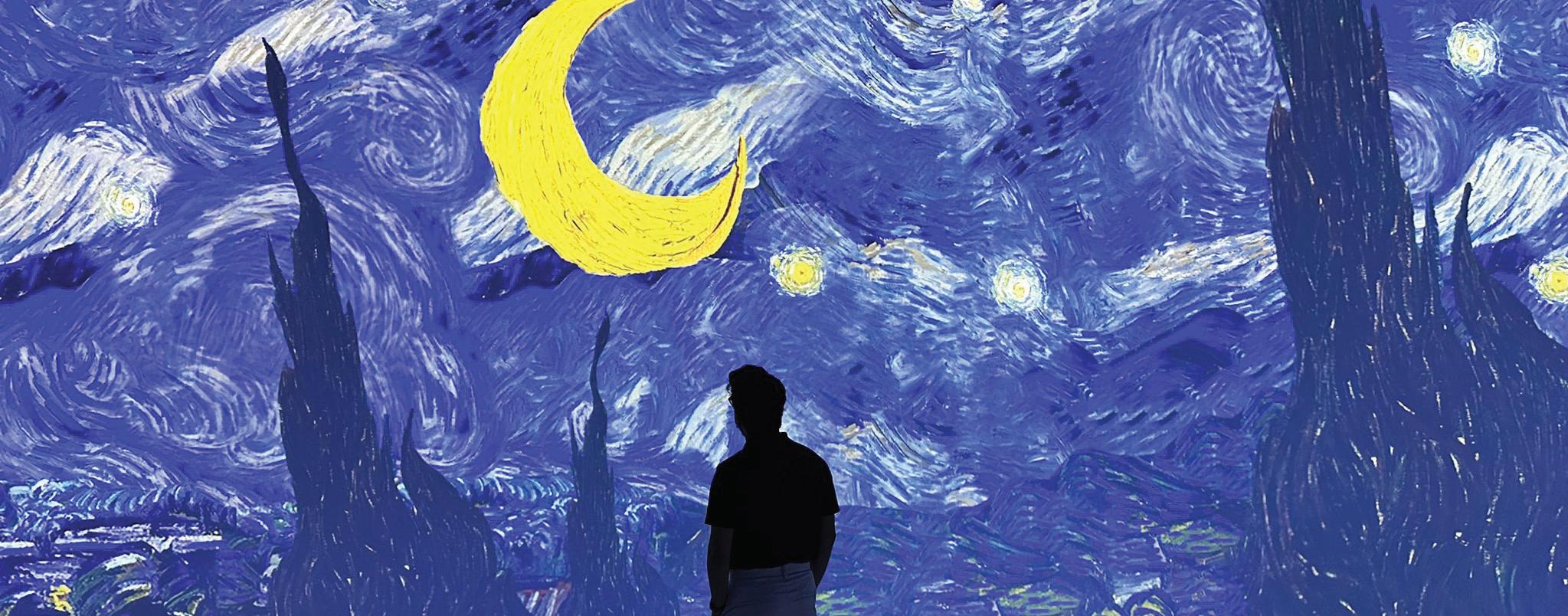
2 minute read
Immersive art experiences: engaging reimaginings or cultural narcissism?
Jenica Davis - Lifestyle Sub-Editor

Advertisement
With the popularity of immersive art experiences on the rise, we ask whether they celebrate seminal artworks, or reduce them to selfie backgrounds
Immersive art exhibitions are the latest form of entertainment in the art world –you have most likely seen them all over your social media, as they have soared in popularity in recent years. Whilst it is fascinating to watch the unusual ways in which art is displayed today, do immersive art experiences act as a revival of historic art or are they simply a new way to commercialise it?
From Picasso, to Kahlo, to Monet, immersive art experiences bring historic, familiar pieces of art onto a digital stage. In these exhibitions, audiences will often sit or walk through large rooms that have a series of artworks projected onto its ceilings, walls, and floors. Soundscapes – and often elements of virtual reality – are also integrated to add to the mesmeric dimension of the experience.
Whether you’re gazing up at Van Gogh’s 'The Starry Night' or walking through Diego Rivera’s streets of Mexico, the idea is that you feel as though you have been submerged into the painting, like you have been teleported directly into the world that the artist has created.
I am no expert in the art field whatsoever. However, having gone through the most debilitating, stress-inducing part of my life that was A-Level fine art, I have eternal admiration for artists and a genuine appreciation for art itself.
Last summer, I visited ‘Van Gogh: The Immersive Experience’ in York and it was certainly a different and refreshing experience compared to most art exhibitions that I have been to. Nonetheless, it did feel like the ‘immersive’ aspect of the exhibition was rather exaggerated – after half an hour, you are essentially staring at the same pieces, they’re just being projected onto more walls in different ways. Whilst I did enjoy my experience, I couldn’t help but notice that many people were quick to leave once they had got the pictures and videos they wanted; it wasn’t difficult to spot who was there for the art and who was there for the aesthetic. In this digital age, a part of me does believe it is important to explore different ways of showcasing art and bringing in new audiences, particularly trying to engage younger generations. However, I also feel like some artwork should simply be left alone. I can imagine many of these beloved artists rolling over in their graves merely at the thought of people using their art – which they dedicated their lives to – as the backdrop of their new Instagram post. A lot of media outlets even advertise these types of exhibitions as "Instagrammable rooms" or ''the next big thing on TikTok''; the educational context and emotional value of the artist’s work appears to get lost with their art being seen as a trend. It is another way of society romanticising an artist’s life, turning their legacy into a ‘tortured artist’ aesthetic. The connection between the art and its audience has thus become extremely superficial; I can’t say it would surprise me if the number of visitors started to plummet if these exhibitions were to have a photo ban. Social media is an inescapable part of today’s world and the depressing reality is that people visit many places purely to exploit it for the sake of their Instagram. Immersive art exhibitions are definitely a unique experience that I think everyone should explore for themselves – with your eyes, rather than your screen – and many rising artists are embracing this new form of art. For now, the controversy surrounding immersive experiences of historic art remains – do we adapt the past to suit the cultural vanity of current society or hope that the renowned genius of the artwork is enough to preserve itself?










